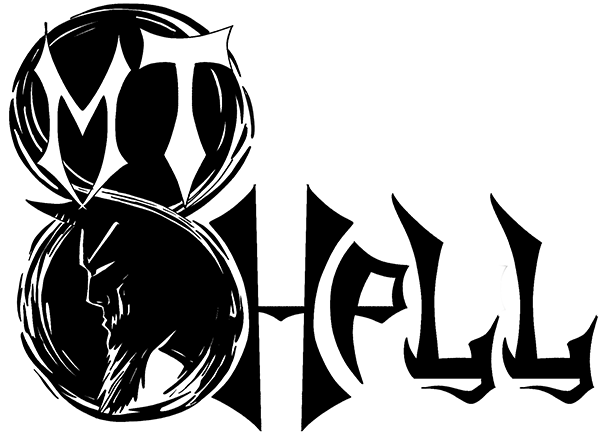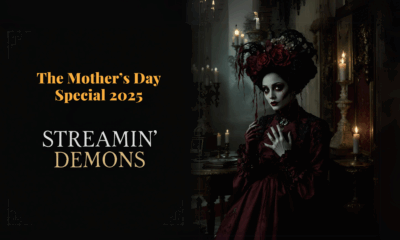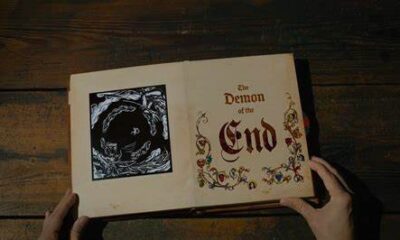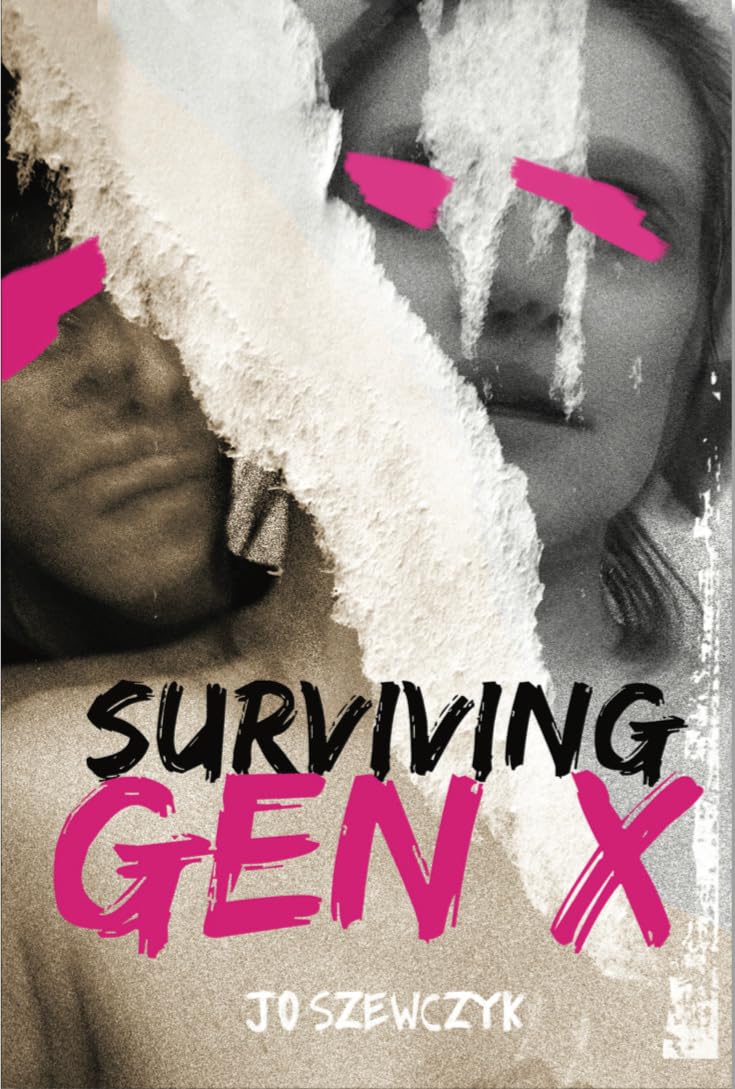
Jennifer Weigel on Surviving Gen X by Jo Szewczyk
Surviving Gen X is a dark and twisted tale of sin and salvation that comes to us from Haunted MTL’s very own Jo Szewczyk. Delving into the depths of debauchery, dysfunction, and deliverance, we follow our protagonists as they navigate the seedy underbelly of Las Vegas, circa 1990. The book reads sort of like an acid trip or a fever dream or both… Good, bad, and ugly, with the gut-wrenching soul-sped journey of a candle lit at both ends, simultaneously fueled by cum, gasoline, and fire. The sexual exploits of our mostly unnamed narrator and lovelorn abused housewife Annie and friends, lovers, and accomplices craft an affair of more than the heart, of two (hundred thousand million billion) lost souls swimming eternally in a fishbowl, year after year after year after…
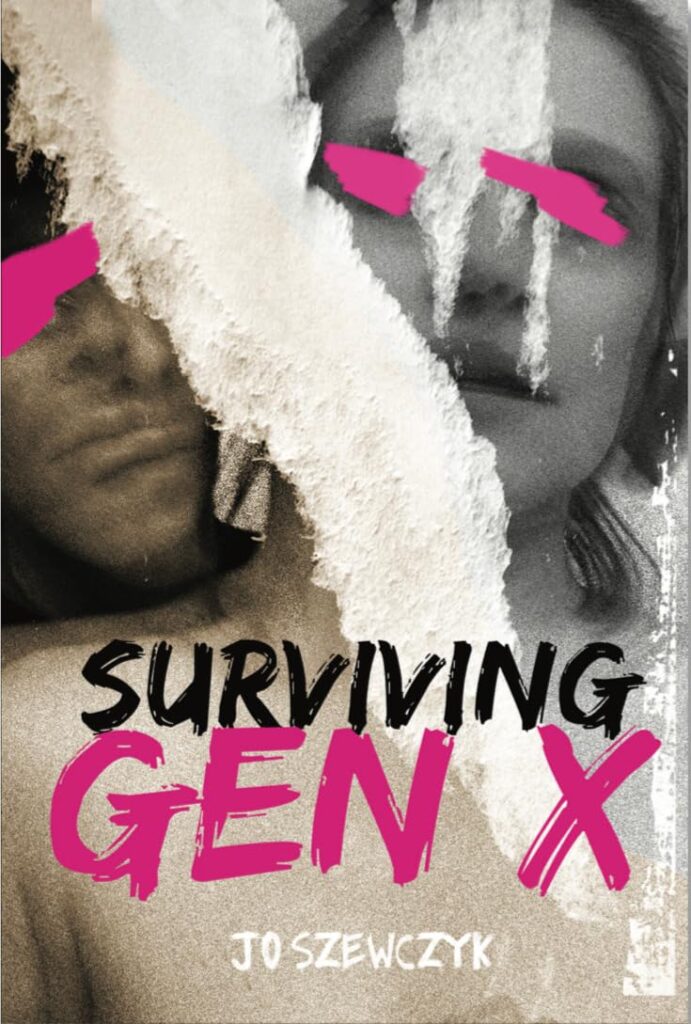
So you think you can tell…?
Surviving Gen X reads less as a credible story and more as an immersive experience, a theatrical performance in which you are whisked away to an alternate reality caked thick in glamour and glitter and grime. It is the sort of journey that leaves a stain on the psyche that won’t wash away no matter how hard you scrub at it. It is raw and provocative and, more than anything, screams to be seen, to be heard, to be rescued. All involved are adrift, seeking fulfillment in a world that refuses to acknowledge and cannot accept them for who they are. They are surviving, moment by moment, and in that space they are each and every one alone, isolated and forsaken. Like flecks of stardust strewn across the universe, our protagonists yearn to cast their glow, to shine forth, to unite, to be made whole… but the growing vastness of the space between them prevents such true connection and eventually all succumb to their own despair.
Despite being naked and vulnerable, this is nonetheless an adventure masked in mud, merriment, and mayhem, seeking friendship and truth as gritty glimmers of hope found only when one throws oneself into the darkest depths of dysfunction to claw their way back out through all of the layers. Only here can such elements of titillating triumph be told, through snippets of scenes that seem to spring forth from the most unreal and unlikely circumstances, like a failed double date at a family restaurant that devolves into potential death by bachelorette party. It is the spaghetti thrown at the wall in the hopes of sticking, trying desperately to hold on, to cling to some sense of relativity. The result is absurd as much as it is agonizing.
Running Over the Same Old Ground, What Have We Found?
Much like a re-birthing, or a regurgitation, this experience is messy and sometimes difficult to swallow. It defies definition and refuses reality, eschewing enjoyment even despite immersing itself in all of the pleasures of the flesh. Because what is left when the body, mind, heart, and spirit are disjointed? Just an off-kilter roller coaster jaunt through oblivion, careening off course in a fast and rapid burnout. There’s no getting off that ride once the kooky contraption gets going, best just to accept the struggle, hold on tight, and see it out to its crazy conclusion. We’re still trying to wash the confetti from our hair after falling out that window.
To quote the 2006 Wergle Flomp poetry contest winning poem, this is:
A travesty / Of buffoonery. / As if a five-year-old child / Were pointing a handgun / At a masturbating clown.
Nicholas Moore, How to Write a Poem
And a hauntingly beautiful and brilliant travesty of buffoonery it is… So I’m not going to rate this experience by Cthulhus; the Cthulhus are still too busy trying to untie the ropes to release the French midget hanging from the crystal chandelier. But if you yearn to see how it all unfolds, and to experience the gritty gaudy glitz in all of its slimy sleazy splendor, then you need only to pick up the book and read for yourself. It’s an adventure you won’t soon forget. You can find it here on Amazon. Plus if you order it now you’ll have it for VD (Valentine’s Day, ya perv, though maybe there isn’t really much difference)… Oh and here’s a sneak peek from13 Days of Krampus 2020…
And if you want to explore something of similar sentiment to set the mood, may I recommend watching Unholy by Sam Smith and Kim Petras? If the following YouTube window doesn’t work, you can find it directly here.
Book Reviews
A Stellar Debut Novel, We Used To Live Here
Imagine this. You’re home alone, waiting for your partner to return, when you hear a knock on your door. You answer it to see a family of five, bundled up against the cold. The father, a kindly older gentleman, explains that he used to live in this house as a boy. And he would love to show it to his family.
Do not let them in.
The story
Released in June 2024, We Used To Live Here is author Marcus Kliewer’s debut novel. It tells the story of Eve, who just purchased a beautiful house with her partner, Charlie. Their plan is to flip the house and sell it.
One night, while waiting for Charlie to come home, Eve is surprised by a knock at the door. It’s a man named Thomas Faust and his family.
Thomas explains that he grew up in the house and hasn’t been in the area in years. Would Eve let them in so that he can show the home to his children?
Against her better judgment, Eve lets them in. She regrets this almost at once when Thomas’s daughter vanishes somewhere into the house.
What worked
I always appreciate a book that allows you to play along with the mystery. And this book does that better than just about any other I’ve seen.
Pay close attention to the chapters, to the words that aren’t there. To everything about this novel.
This is mostly down to Kliewer. This is ultimately his work of art. But the production value is also fantastic. I don’t want to ruin the multiple mysteries, so I’ll just say this. There are clues in this book that require some specific artistic choices in the page layouts in this book. And I loved that.
If you’d like to experience another horror book review, check out this one.
We Used To Live Here is also the kind of story that makes you question everything right along with the main character, Eve. Eve is a great main character. But she might be an unreliable narrator. She might be experiencing every single horror described, exactly as it’s described. Or, she might be having a psychotic breakdown. Through most of the book, we can’t be sure. And that is so much fun.
Finally, the weather plays a large part in this story. There are several stories in which the weather or the land itself could be considered a character. Even an antagonist. This is certainly one. The winter storm is the thing that traps the family in the house with Eve. It also makes escaping the home difficult. Reading this book during the winter was especially impactful. Most of us know what it feels like to be shut in by a storm. I’ve personally lived through some of those storms that are just referred to by their year, as though they were impactful enough to claim the whole 365 days for themself. And that was with people I liked. Imagine what it would feel like with strangers. It’s a staggering thought and one that we explore in depth in this book.
In the end, We Used To Live Here is a fantastic book. It’s the sort of story that sneaks into your brain and puts down roots. And if this is just the first book we’re getting from Kliewer, I can’t wait to see what else he comes up with.
 (5 / 5)
(5 / 5)
Book Reviews
Exploring real terror with The House of My Mother
As a disclaimer, this is a review of The House of My Mother from a critical perspective. I will not be discussing my opinions of the legal case against Ruby Franke and Jody Hildebrandt. I will be discussing the merits of the book as a work of true crime alone.
In 2015, Ruby Franke started a YouTube channel called 8 Passengers. In August of 2023, Franke and her business associate Jodi Hildebrandt were arrested for, and later plead guilty to, charges of aggravated child abuse. And in January of this year, Shari Franke told her story in The House of My Mother.
The story
The House of My Mother is the true story of Shari Franke, the oldest child of one of the most famous family vlogger families.
As a child, Shari came to the conclusion that her mother didn’t like her. Soon, she began to fear her mother’s anger.
Things got significantly worse when Ruby started their family vlog. All of the families most intimate moments were splashed across the internet for anyone to watch. This became a living nightmare for Shari.
Of course, that was only the start of the family nightmare. Because Ruby was about to meet someone who would reinforce all of the darkest parts of herself.
Eventually Shari manages to escape her home. But her younger siblings were still in her mother’s clutches. She had to save them, and her father, from the monster her mother had become.
What worked
Through the book, Shari only ever mentions the name of one of her siblings, Chad. This is because Chad is the only of her siblings that is an adult at the time of the publication.
There are children involved in this story. Children who’s lives and privacy have already been damaged. Shari didn’t want to do that to them again, and neither do I.
It probably won’t surprise you that this book is full of upsetting details. But not in the way you might imagine.
Nowhere in this book will you find gory details about the abuse the Franke kids suffered. And I consider that a good thing. Those sort of details are all fun and games when we’re talking fiction. When it’s real kids who are really living with the damage, it’s not a good time.
What you’ll find instead is a slew of more emotionally devastating moments. One that stuck with me is when Ruby’s mother gives her a pair of silk pajamas as a gift after Ruby gave birth to one of her babies. Shari asks Ruby if she’d bring her silk pajamas when she had a baby. Ruby responds that yes, when Shari becomes a mother they can be friends.
What a lovely way to make a little girl feel like she’s not worth anything unless she reproduces. And, if she does decide to have children, who is going to bring her silk pajamas?
In the end, this isn’t a story about ghosts or demons. It’s not about a serial killer waiting on a playground or in the attic of an unsuspecting family. Instead, this is a story about things that really keep us up at night. It’s the story of a woman so obsessed with perfection that she drove away her eldest daughter. The story of a young woman who’s forced to watch from afar as her beloved brothers and sisters are terrorized and abandoned. These are the sorts of things that really keep us up at night. These are the real nightmares.
More than that, though, The House of My Mother is a story of survival. It’s about a family that was ripped apart and somehow managed to stitch itself back together again. It’s about a brave young woman who managed to keep herself safe and sane in the face of a nightmare. If you haven’t read it yet, I can’t recommend it enough.
For more like this, check out my review of Shiny Happy People.
 (5 / 5)
(5 / 5)
Book Reviews
Book Review of Boreal: an Anthology of Taiga Horror

Boreal: an Anthology of Taiga Horror is a collection of twenty-two haunting tales that dwell in the deepest darkest woods and frozen wastelands, edited by Katherine Silva and including Haunted MTL’s very own Daphne Fauber. Each story has even been gifted with its very own poster, hinting at the horrors to be found within it, bestowing a beautiful visual collection as well.
The tales are varied and touch upon the environment in new and different ways, each hearkening to a sort of epiphany or raised awareness. These stories exude both dread and wonder at the smallness of our human existence in contrast to the sacred world we have isolated from, sheltering ourselves in our comfortable houses with centralized heat and everything we could possibly need or want at the ready. The taiga becomes a sanctuary outside of our own dulled awarenesses. It is a holy place imbued with powers beyond mortal human reach, a wilderness that threatens to swallow us – both whole and bit by bit, simultaneously.
The protagonists enter into this realm through ritual, superstition, longing, stubbornness, and their own hubris – yearning to survive its dangers, and to make their own marks upon it. The starkness of their surroundings harbors delicate moments that would be all too easily missed if not deliberately sought or pointed out. The softness of fur, the dappled sunlight shining through trees, the hazy clouds of breath forming in crisp air, the brittleness of bleached bone… those quiet experiences that beg to be forgotten, to lay safely sleeping just below the frozen surface, awaiting spring.
There are those who followed in the footsteps of their predecessors, seeking to escape the constraints of their parent’s and elders’ indoctrination, traditions, madness, and abuse, yearning to find their own way despite also being inextricably bound to their own pasts. There are those who just wanted to go for a walk in the woods, and remained forever changed by what they experienced. There are those who wished to impose their will upon the wilderness, their order falling to disarray, unable to make lasting impact. There are those who sought to leave behind the world of mankind, looking for oneness in the natural order of things through isolation, leaving a bit of themselves behind after being consumed by the terrors they encountered. There are those who truly found communion with the woods, became one with its wildness, and invited its spirit into their hearts to find peace, even at cost of their own lives. And then, there are the spirits themselves…
 (3 / 5)
(3 / 5)
All in all, I give Boreal: an Anthology of Taiga Horror 3.0 Cthulhus. I love existential angst so I found it to be an enjoyable read, and I appreciated the myriad manners in which the biome was explored. But there were points in which I found myself struggling to follow along, as if the words were swept up into their own wilds in ways that alienated myself as reader, as if my mere voyeurism into this otherworldly place was not enough to comprehend the subtle deviations in storytelling mannerisms fully. I suppose in some sense this seems appropriate, but at the same time, it left me feeling a bit unfulfilled, as if I had missed a spiritual connection that should have resonated more deeply.

